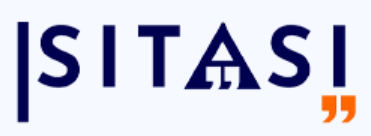APPLICATION OF BLENDED LEARNING MODEL FLIPPED CLASSROOM IN BUSINESS FEASIBILITY STUDY COURSES
Case Study on Students of STKIP Development Economic Education Study Program in Indonesia during the Covid-19 Period
DOI:
https://doi.org/10.53067/ije3.v2i3.93Keywords:
Student Response, Flipped Classroom, Blended LearningAbstract
This research is descriptive. We intend to conduct the research presented here. At the STKIP Development Indonesia Economic Education Study Program in the Even Semester of the 2021/2022 Academic Year. The population in this study were students of the 2019 Economics Education Study Program who were programming a business feasibility study course. The samples of this study were students of class 6/D, amounting to 33 active people. Data collection techniques in this study are observation and questionnaires. The purpose of this study is to find out and describe data regarding student responses to the application of the blended learning model of the flipped classroom. The observation sheet consists of perceiving the teaching and learning process, organizing the teaching and learning process, and evaluating the teaching and learning process. The student response questionnaire consists of interest, learning awareness, and motivation. Data analysis in this study was used to describe student responses after participating in the teaching and learning process. According to the findings, the student's reactions to implementing the blended learning model in the flipped classroom fell into the "Good."
Downloads
References
Bersin, J. 2004. The Blended Learning Book: Best Practices, Proven Methodologies, and Lessons Learned. USA: Pfeiffer Publishing.
Chick, R. C., Clifton, G. T., Peace, K. M., Propper, B. W., Hale, D. F., Alseidi, A. A., & Vreeland, T. J. (2020). Using Technology to Maintain the Education of Residents During the COVID-19 Pandemic. Journal of Surgical Education, 77(4), 729–732. https://doi.org/10.1016/j.jsurg.2020.03.018
Damayanthi, A. (2020). Efektivitas Pembelajaran Daring di Masa Pandemi Covid 19. JURNAL SOSIAL:Jurnal Penelitian Ilmu-Ilmu Sosial, 21(3), 53–56.
Dewi, A. A., & Dedi P. (2020). Efektivitas Penggunaan Media Belajar dengan Sistem daring di Tengah Pandemi Covid-19. (Online). Universitas Negeri Malang. Prosiding Web-Seminar Nasional (Webinar) 20 Juni 2020. Di akses pada 10 Oktober 2021.
Dwiyogo, W.D. (2018). Pembelajaran Berbasis Blended Learning. Depok: Rajawali Pers.
Kusnandar. (2021). Sebuah Gagasan Model Pembelajaran Kolaboratif Pasca Pandemi pada Portal Rumah Belajar, Pena, Kemdikbud, April 2021. (online). http://pena.belajar.kemdikbud.go.id/2021/04/sebuah-gagasan-model-pembelajaran-kolaboratif-pasca-pandemi-pada-portal-rumah-belajar/. Di Akses pada 24 Juni 2021.
Kusnandar. (2021). Substansi Pemanfaatab dab Evaluasi Teknologi Pembelajaran Pusdatin Kemendikbudristek. (online). https://pusdatin.kemdikbud.go.id/flipped-classroom-sebagai-solusi-pembelajaran-tatap-muka-bergilir-pasca-pandemi/. Di Akses pada 24 Juni 2021.
Mutmainah, Siti. (2018). Model Pembelajaran Flipped Classroom, Pustekkom. (Online). https://sibatik.kemdikbud.go.id/inovatif/assets/file_upload/pengantar/pdf/pengantar_2.pdf. Di Akses pada 24 Juni 2021.
Staker, H & Horn, M.B. (2012). Classifying K-12 Blended Learning. Inno Sight Institute.
Sukirwan. (2020). Pembelajaran Dari Rumah Dari Klasikal Ke Digital. Akrab Juara, 5(1), 43–54.
Thorne, Kaye. (2003). Blended learning: How to integrate online and traditional learning. London. : kagan page limited
Wahyudin, Mansyur, Rusyadi, & Jumadin. (2021). Penerapan blended learning model flipped classroom pada mata kuliah strategi pembelajaran kejuruan (kasus pada mahasiswa jurusan pendidikan teknik otomotif). Pendidikan Teknik Otomotif Fakultas Teknik Universitas Negeri Makassar. (Tesis). Jurnal unm. http://eprints.unm.ac.id/20153/.
Wulandari, Mega, Konsep Dasar Metode Flipped Classroom. (2020). Universitas Sanata Dharma, (online). https://www.usd.ac.id/pusat/ppip/2020/05/04/konsep-dasar-metode-flipped-classroom/. Di Akses pada 24 Juni 2021.
Downloads
Published
How to Cite
Issue
Section
License
Copyright (c) 2022 Hamran, Eka Adnan Agung

This work is licensed under a Creative Commons Attribution-NonCommercial-ShareAlike 4.0 International License.
Copyright @2021. This is an open-access article distributed under the terms of the Creative Commons Attribution-NonCommercial-ShareAlike 4.0 International License (http://creativecommons.org/licenses/by-nc-sa/4.0/) which permits unrestricted non-commercial used, distribution and reproduction in any medium
















